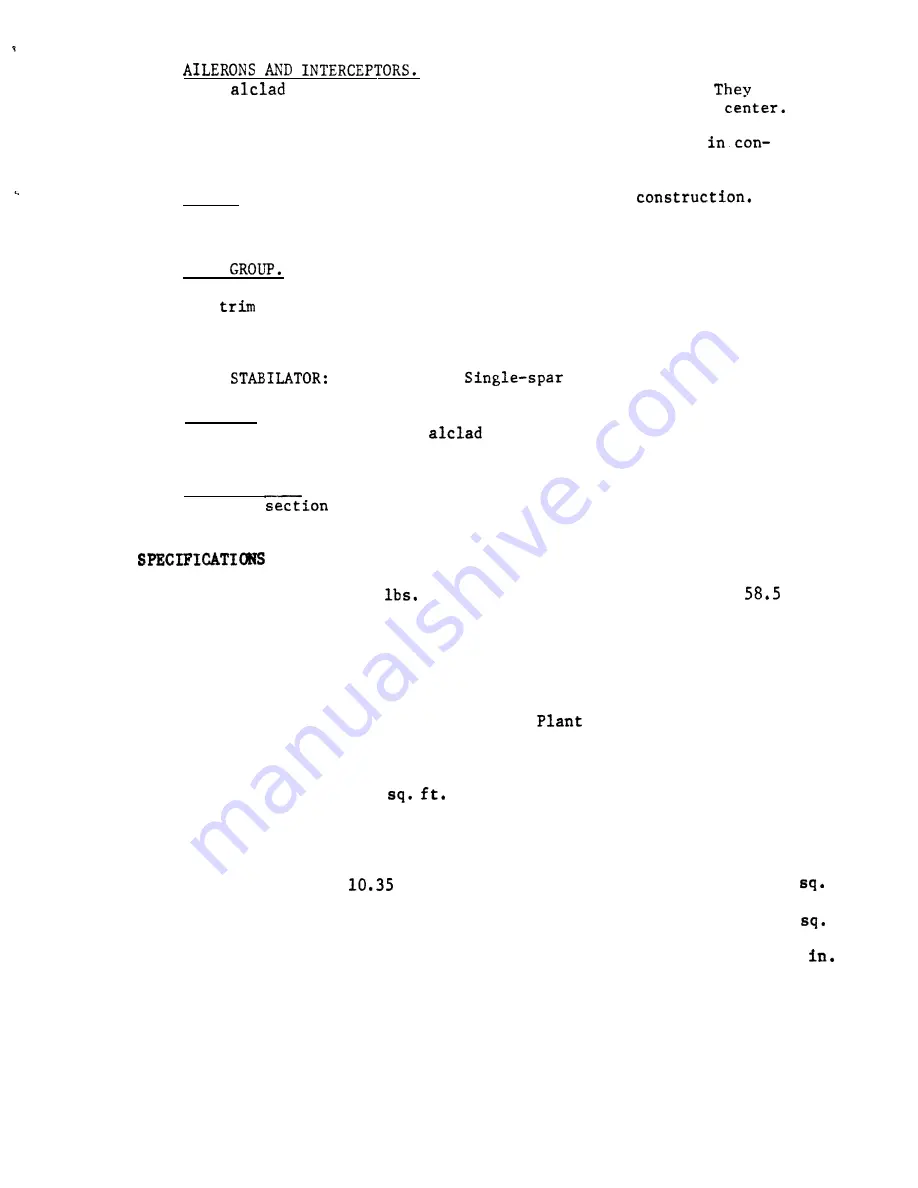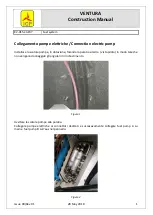
The ailerons are the Frieze type, of
2024
diagonal rib truss structure, fabric covered,
are
hinged at both ends and operated by a push-pull tube at the
The interceptors consist of heavy aluminum alloy curved plates (inboard)
and forward of each
aileron).
They emerge from the wings
junction with the ailerons.
FLAPS.
The flaps are of a single spar all-metal
They
are supported to the wing structure by three flap tracks and are
actuated by push-pull tubes at the center and outboard tracks,
TAIL
The tail group is composed of a vertical fin and rudder,
and an all-movable horizontal surface equipped with an anti-balance
and
tab.
All tail surfaces are of aluminum alloy construction.
FIN:
Two-spar construction,
RUDDER:
Single-spar construction
construction
FUSELAGE.
The forward fuselage structure is a welded steel tube
truss.
It is covered with
sheet in the cabin section; the
remaining portion is semi-monocoque.
LANDING GEAR.
The main landing gear is the Spring Steel type mounted
in a box
of the fuselage structure.
The Nose Wheel is the
air-oil shock strut type and is attached to the engine mount.
Gross Weight
Empty Weight
Wing Span
Wing Chord
Wing Area
(Slats retracted)
Overall Length
Aileron Area
(Each Surface)
3400
Fuel Capacity (Useable)
2023 lbs.
Octane Rating
39 ft.
Oil Capacity
72 in.
Power
231
Take-off Horsepower
30 ft. 4 in.
Normal Rated Horsepower
sq. ft.
Flap Area (Each Surface)
Slat Span (Each Wing) 203.93 in.
Stabilator Area
Rudder and Fin Area
24.40 sq. ft. Wheel Tread
gals.
100 (Min.)
12 qts. (Max.)
10 qts. (Desired)
GO-480-GlA6
Lycoming
295
280
19.05
ft.
37.50
ft.
102.00
2
Summary of Contents for HT-295
Page 1: ...HELIO AIRCRAFT COMPANY HELlO MODEL HT 295 OWNERS MAN UAL ...
Page 27: ...c c l l ...
Page 28: ......




































